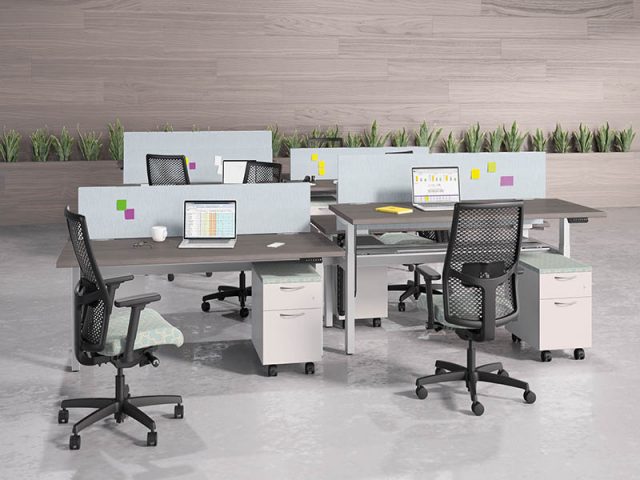
Short breaks from an open office, such as getting outside for a few minutes to read a magazine or relax in a park, can give you a boost and make you better at your tasks when you get back to work.” “Research shows that the noise associated with open offices can be stressful, you should consider periodically leaving the office during regularly scheduled breaks to escape the stress and let your physiological systems return to baseline levels. Here’s what Jamie Gruman, Ph.D., a psychologist and a professor of organizational behavior at the College of Business and Economics at the University of Guelph suggests: What can you do when you’ve got no choice but to work in this noisy, chaotic environment?

They see the innovation coming out of firms in Silicon Valley and think that open offices might be a part of fostering that success.” Firms in other industries have taken note of tech companies' rapid growth and popular work cultures, so CEOs across the board have opted for open office plans. “Over the course of time, people began to associate cubicles with a lack of individuality, which is part of the reason we see a rise of open offices today, also popularized by tech giants like Facebook, Microsoft and Google seeking to bolster collaboration. “We actually saw the rise of the cubicle in the 1960s as a means of trying to inject personal identity and private space into the one-size-fits-all open office,” says Jonathan Webb, VP of workplace strategy at KI. Open office plans are aimed to bring us together These findings are troubling, particularly since the open office plan is becoming increasingly common, fueled not only by cost-efficiency, but by the idea that being in a boundless space nurtures a collaborative spirit, ultimately enabling you and your teammates to work more fluidly together - resulting in sort of the opposite effect of cubicles. Studies show that in open offices, employees have significantly less face-to-face interaction than they do when they have spatial boundaries. A separate study by Oxford Economics concluded that noise pollution in open offices has reached “epidemic levels,” with 63 percent of employees stating that they lack quiet space for work, which in turn has a “negative effect on their productivity, satisfaction and well-being”. The Harvard Business School recently published studies showing that in open offices, employees have significantly less face-to-face interaction (by about 70 percent) than they do when they have spatial boundaries, while electronic communications surge by as much as 50 percent. These problems seem to come with the territory of open office life. Noise pollution is real, and it’s impacting employees' lives My colleagues and I mostly used email and online chatting to communicate so that we wouldn’t have to shout. It was tough to book a conference room because editorial was competing with every other department whose employees were just as eagerly seeking peace. I was also constantly distracted by the conversations around me. Much of my job as an editor required quiet time to read, write and call sources and little of this work could get done comfortably in an environment stripped of privacy and gushing with noise.


One aspect I’ve never been remotely nostalgic about was the open office setting, which the last company I worked for transitioned to shortly before I left.Ĭubicles aren’t great (and I don’t miss those, either), but at least they afforded me a sense of privacy and clear boundaries. Once I switched from full-time employment to full-time freelance (aka, being self-employed and working from home), there were a lot of things I came to miss about office life, such as the set schedule and being around co-workers.


 0 kommentar(er)
0 kommentar(er)
